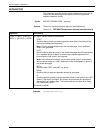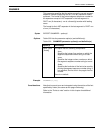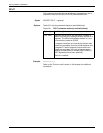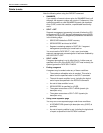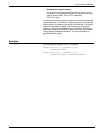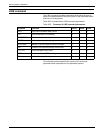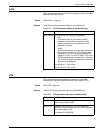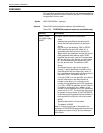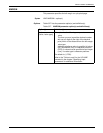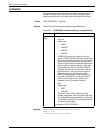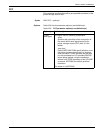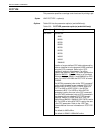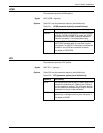
PRINT FORMAT COMMANDS
6-32 XEROX DOCUPRINT 180 LPS PDL REFERENCE
FONTINDEX
This parameter specifies that a field within a user data record defines
the index to a specific font to be used for that line. If FONTINDEX is
not specified, none is used.
Syntax LINE FONTINDEX =
option(s)
Options Table 6-26 lists the parameter option(s) and definition(s).
Table 6-26. FONTINDEX parameter option(s) and definition(s)
Option(s) Definition(s)
{
offset
| (
offset
[,
init-val
][,
bit-opt
]) |
NONE}
This option has the following components:
•
offset
Indicates the byte offset in the data record
where the font index number is to be found.
•
init-val
Can be one of the following: ONE or ZERO.
ONE specifies that an index value of 1 is
associated with the first font in the font list.
When the bit-opt parameter is used, the init-val
ONE parameter must also be used. ZERO
specifies that an index value of 0 is associated
with the first font in the font list, an index value
of 1 is associated with the second font in the
font list, and so forth. The default is ONE.
•
bit-opt
A numeral having a value in the range of 1
through 7, which specifies the number of low-
order bits within the font index byte, which, in
turn, specifies an index value into the font list of
the current PDE. The default value is 4.
If
init-val
is ONE or is not specified, the value of
the font index byte in the data record is a
number in the range 1 to
n
, where
n
is the
number of fonts specified in the PDE parameter
(1 to 128). If ZERO is specified, the font index is
a number in the range 0 to n, where n is the
number of fonts specified in the PDE parameter
minus one (0 to 127). The font index value must
be present in every record. If the FONTINDEX
in the data record is greater than the number of
fonts specified, the first font in the list is used.
• NONE
Specifies that there is no font index.
The default is NONE.
Refer to “Points to note” later in this section for
discussion of FONTINDEX usage with overprint lines
and maximum number of fonts, and the examples
which follow.



